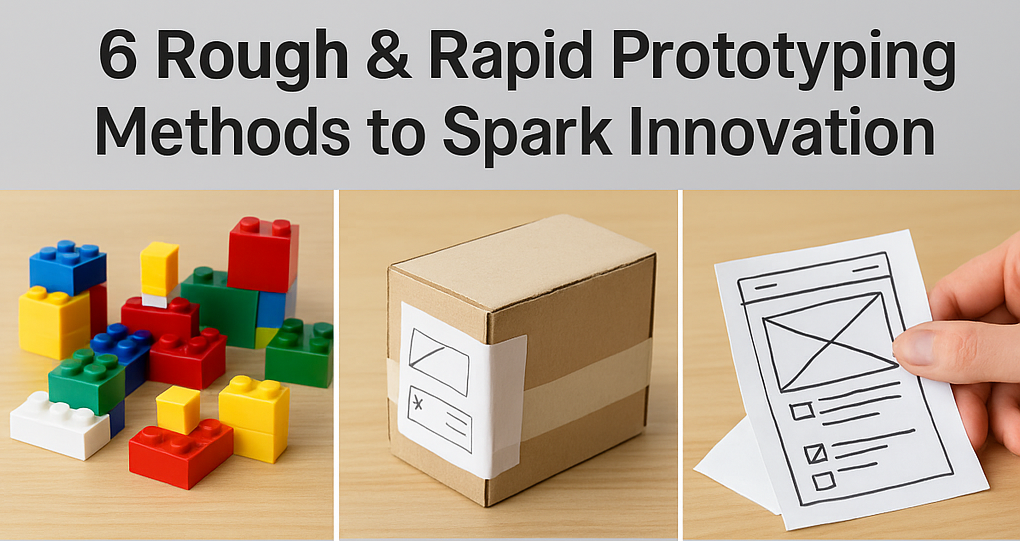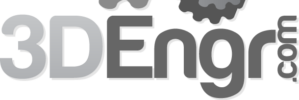Quickly Make Rapid, Rough, Low-Fidelity Prototypes
When it comes to innovation, sometimes the best ideas start not with a polished 3D model or CAD rendering — but with a handful of LEGO bricks, a cardboard box, or even a back-of-the-napkin sketch. These low-fidelity prototypes may look rough, but they are powerful tools for thinking, communicating, and iterating fast.
Whether you’ve got a makerspace or you’re in product development, design thinking, engineering, or just love to make things, embracing “rough and rapid” prototyping can unlock creative breakthroughs — before you ever hit print on your 3D printer.
Here are 6 of the most accessible and effective physical prototyping methods to jumpstart your ideas:

1. LEGO and Froebel Blocks
Before 3D printers, there were building blocks.
Using LEGO bricks or Froebel blocks (yes, the same kind that inspired kindergarten and Bauhaus education) lets you model systems, layouts, interfaces, or product forms quickly and playfully. These tactile materials spark spatial thinking, creativity, and collaboration — especially when you’re working with a team.
🧠 Innovation Tip: Use blocks in your design thinking workshops to model user journeys or product ecosystems. You’ll be surprised how much insight emerges from the act of building.
🔗 Read more: Froebel Blocks, LEGO Serious Play, and Design Education
2. Cardboard and Tape Models
Grab a box cutter and some packaging from your recycling bin. That’s all you need to start prototyping.
Cardboard models help you explore product dimensions, ergonomics, and physical interactions. They’re ideal for rough layout testing or envisioning how a device might sit in the user’s environment.
🧠 Innovation Tip: Add paper labels or stickies to simulate screens, buttons, or features. It helps simulate the real user experience at low cost.
3. Paper Mockups and Origami Interfaces
Paper isn’t just for drawing — it’s also a modeling material.
Folded paper structures, pop-up cards, or accordion layouts can represent interfaces, unfolding products, packaging, or even wearable designs. They’re fast, flexible, and let you iterate multiple versions in minutes.
🧠 Innovation Tip: Use paper to test form factors for handheld products or simulate how users will open, read, or interact with something tactile.
4. The “Box Hack” Prototype
Take a product box — like one for a phone, appliance, or toy — and turn it into a prototype. Cover it with your own labels, sticky notes, and feature mockups.
This is a powerful way to explore product positioning, user-facing benefits, and packaging ideas — especially in consumer goods or hardware design.
🧠 Innovation Tip: Use this for rapid brainstorming of feature sets or marketing language before developing the actual product.
5. Napkin Sketches and Tabletop Maps
It’s the classic startup cliché — the million-dollar idea born on a napkin. And it still works.
Quick hand-drawn sketches are essential tools for communication, especially early in the process. Map an idea, flow, or user journey — even roughly — and you’ve got something tangible to test or get feedback on.
🧠 Innovation Tip: Encourage teams to sketch their idea in 2 minutes and explain it to a partner. It builds clarity fast.
6. Tape, Sticks, String, and Found Objects
Want to test a shape or structure quickly? Reach for masking tape, popsicle sticks, toothpicks, rubber bands, or anything else you’ve got on hand.
These ultra-low-cost materials let you explore form, scale, and structure. They’re often used in architecture and engineering studios — but just as useful in any innovation session.
🧠 Innovation Tip: Challenge your team to build a functional prototype using only materials found on their desk in 15 minutes.
Why Rough Prototypes Work
They’re fast and inexpensive — encouraging more ideas and more testing.
They invite collaboration — everyone can build and contribute.
They reduce attachment — it’s easier to let go of ideas that don’t work.
They focus on function, not form — helping you solve real user problems first.
These rough-and-ready methods aren’t just for kids or artists. They’re serious tools used by top design firms, product teams, and innovation labs around the world.
So next time you’re stuck staring at a blank screen, try building instead of just thinking. The answer might be waiting in your recycling bin.
Want to go deeper into hands-on innovation and design thinking?
Explore more innovation and design tips, tools, and techniques at InnovationTraining.org/resources.
